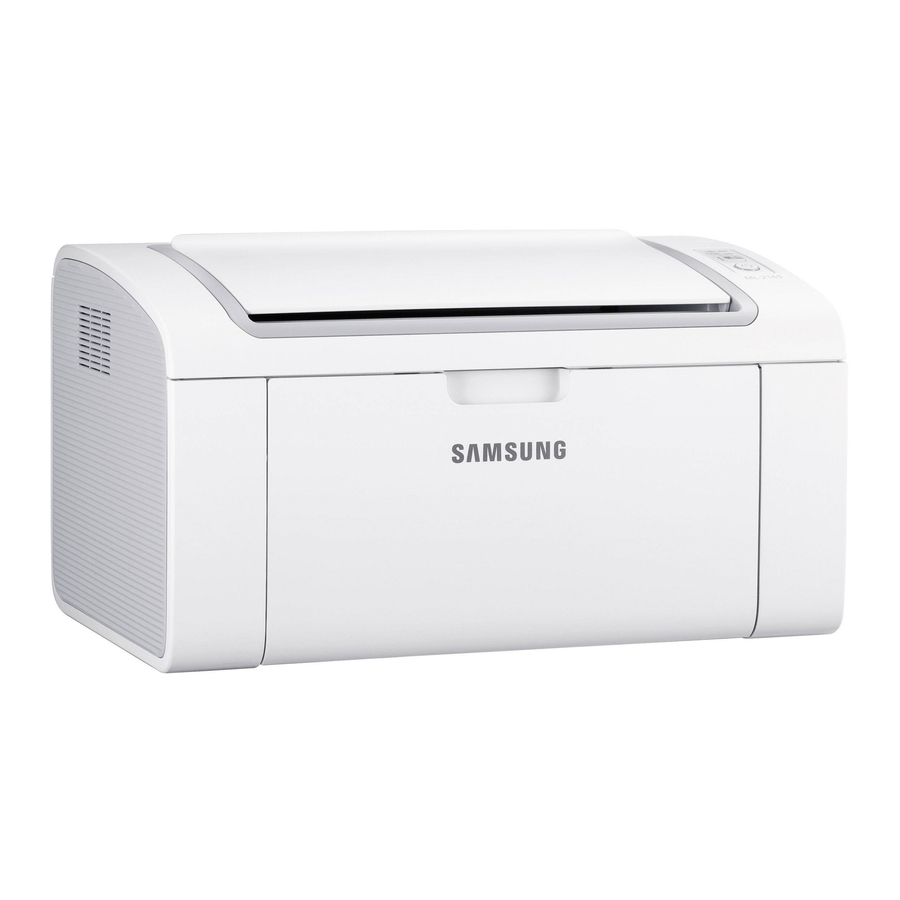
Table of Contents
Advertisement
User's Guide
User's Guide
ML-216x Series
ML-216xW Series
BASIC
BASIC
This guide provides information concerning installation, basic operation and
troubleshooting on windows.
ADVANCED
This guide provides information about installation, advanced configuration, operation and
troubleshooting on various OS environments.
Some features may not be available depending on models or countries.
Advertisement
Chapters
Table of Contents













Need help?
Do you have a question about the ML-2165 and is the answer not in the manual?
Questions and answers
Värikasetin vaihto
To replace the toner cartridge in a Samsung ML-2165, follow these steps:
1. Open the front cover.
2. Slide the empty toner cartridge out of the printer.
3. Take the new cartridge out of its packaging.
4. Shake the new cartridge five or six times to distribute the toner.
5. Hold the handle of the cartridge and push it inside the printer until it touches the back.
6. Close the front cover.
This answer is automatically generated